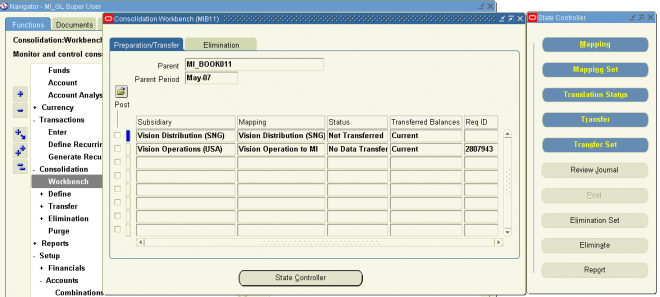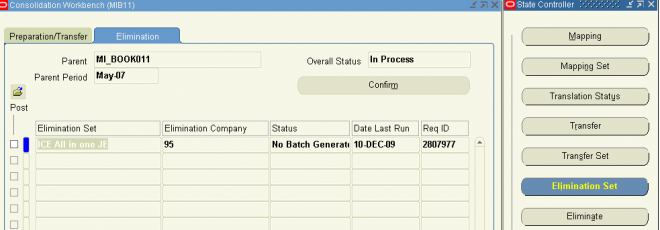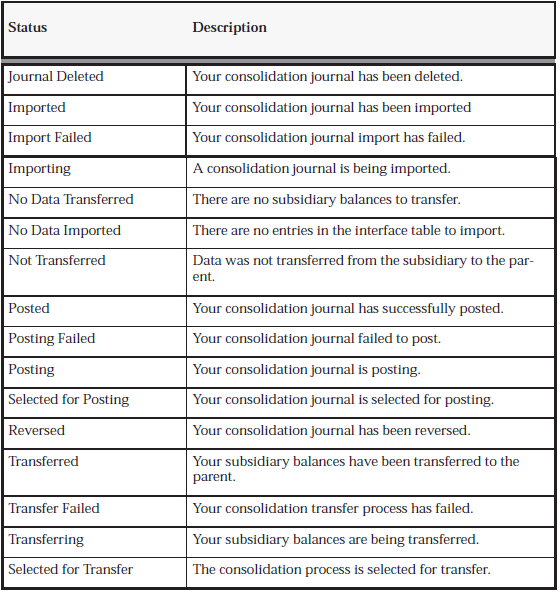The Consolidation Workbench provides a central point of control for consolidating an unlimited number of subsidiaries to your parent, while keeping you informed about each subsidiary’s consolidation status. The workbench also monitors subsidiary account balances for any changes that occur after the subsidiary data has already been transferred to your parent set of books.



Consolidation Reversals
If you reverse a subsidiary consolidation process, the Status column displays Reversed for that process if all the following conditions have been met:


The Consolidation Workbench monitors the activity of all your subsidiaries to display the status of each process you submit. The table below lists all possible statuses for consolidation processes displayed in the status column:

In addition, the Transferred Balances column lists the following statuses for each consolidation process you submit:
Current: The consolidated data from the subsidiary to parent is current. The status is always current before a consolidation is transferred.
Obsolete: Any account balance for your subsidiary has changed after a transfer of subsidiary data to the parent.
Note: Even if a particular consolidation is only for a partial account range of the subsidiary, any account updated in the
subsidiary will result in an obsolete status for that consolidation process.
The obsolete status lets you know that subsidiary balances no longer agree with balances previously transferred to the parent. You must reverse the original consolidation process, then initiate another consolidation transfer. The status of the new transfer will be Current.Current: The consolidated data from the subsidiary to parent is current. The status is always current before a consolidation is transferred.
Obsolete: Any account balance for your subsidiary has changed after a transfer of subsidiary data to the parent.
Note: Even if a particular consolidation is only for a partial account range of the subsidiary, any account updated in the
subsidiary will result in an obsolete status for that consolidation process.
Consolidation Reversals
If you reverse a subsidiary consolidation process, the Status column displays Reversed for that process if all the following conditions have been met:
- You must post the original consolidation journal
- You must generate a reversal of the original consolidation journal
- You must post the generated reversal consolidation journal

0 comments